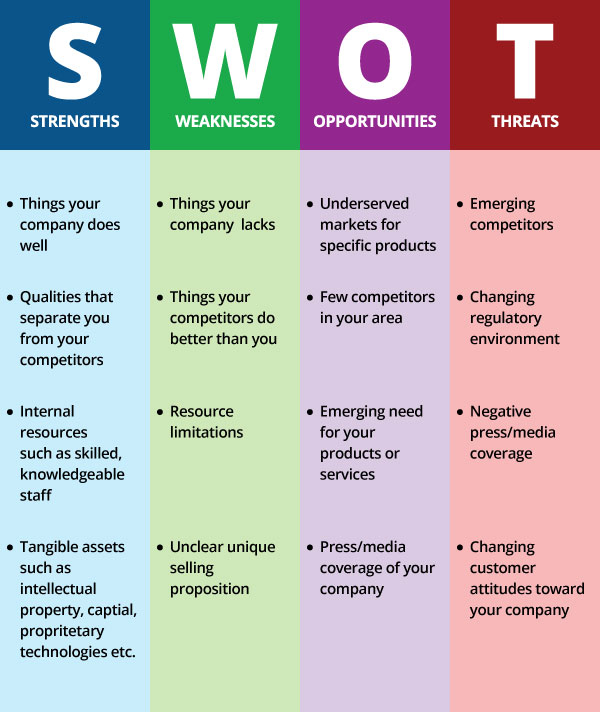Part Four: Aligning Research Results with Decision-Making—SWOT and Fish Bones

Stephen Abram
I’ll bet you’ve done SWOT a lot. It’s a classic technique but one which benefits, I believe, from fish bone force field diagramming. It’s easy to do and, with good facilitation, mines the brains in the room quickly.
Here’s the SWOT classic process:

You bring SWOT team members together—selected for a number of reasons including creativity, knowledge, and rank. And you brainstorm each of the four: strengths, weaknesses, opportunities, and threats. It can be enough to document those results and use them to inform future processes. I believe that it’s even better to engage in one more step.
Fish Bones Diagram
The thinking trigger I like about fish bone diagrams is that they can use force field analysis to visually represent the challenges facing your project or service development priorities.
Simply fish bone diagrams need only have your four populated SWOT boxes. Put Strengths and Opportunities on top (they help you reach the top) and put Weaknesses and Threats on the bottom (They pull you down). These all affect the progress you can make towards the desired goal.

Now take a look at it. Are there stronger forces pulling you down? Is there enough energy and helium in the forces above to counteract the downward pull? What strategies do you and your clients need to employ to move up and forward?
Are you starting to see how these frameworks align with value added activities for research products, tools and intranet content organization? I know a number of these play well in the competitive intelligence space.
Watch for the next post soon!
Stephen

Stephen Abram
Similar Posts
Growing Your Leadership Skills: 7 Tips for Special Librarians
Great library leaders aren’t born—they’re made through learning self-reflection and practice. Here are seven strategies to help you grow and lead with impact.
Keeping Up with Copyright and Generative AI: What Special Librarians Need to Know
As generative AI becomes more prevalent copyright law is evolving to address its impact. A new report from the U.S. Copyright Office provides guidance on what is (and isn’t) copyrightable.
Understanding Shadow AI: Risks Costs and Governance
AI can enhance search discovery and efficiency but unsanctioned adoption—known as “shadow AI”—can lead to budget overruns and compliance risks. Here’s how to evaluate AI pricing models and build a governance strategy that balances innovation with cost control.
Interview with an Author: Fernandez on Streaming Video Collection Development
As demand for streaming video in libraries grows so do the challenges of managing access budgets and licensing. Co-author Michael Fernandez shares key insights from his book “Streaming Video Collection Development and Management”.





